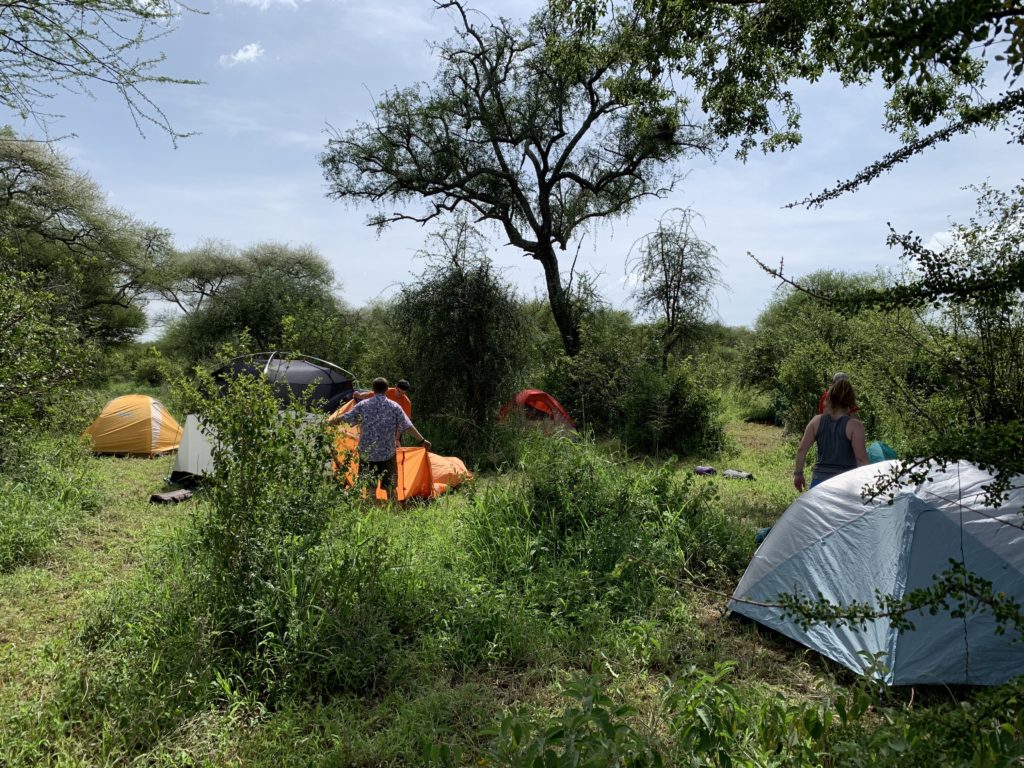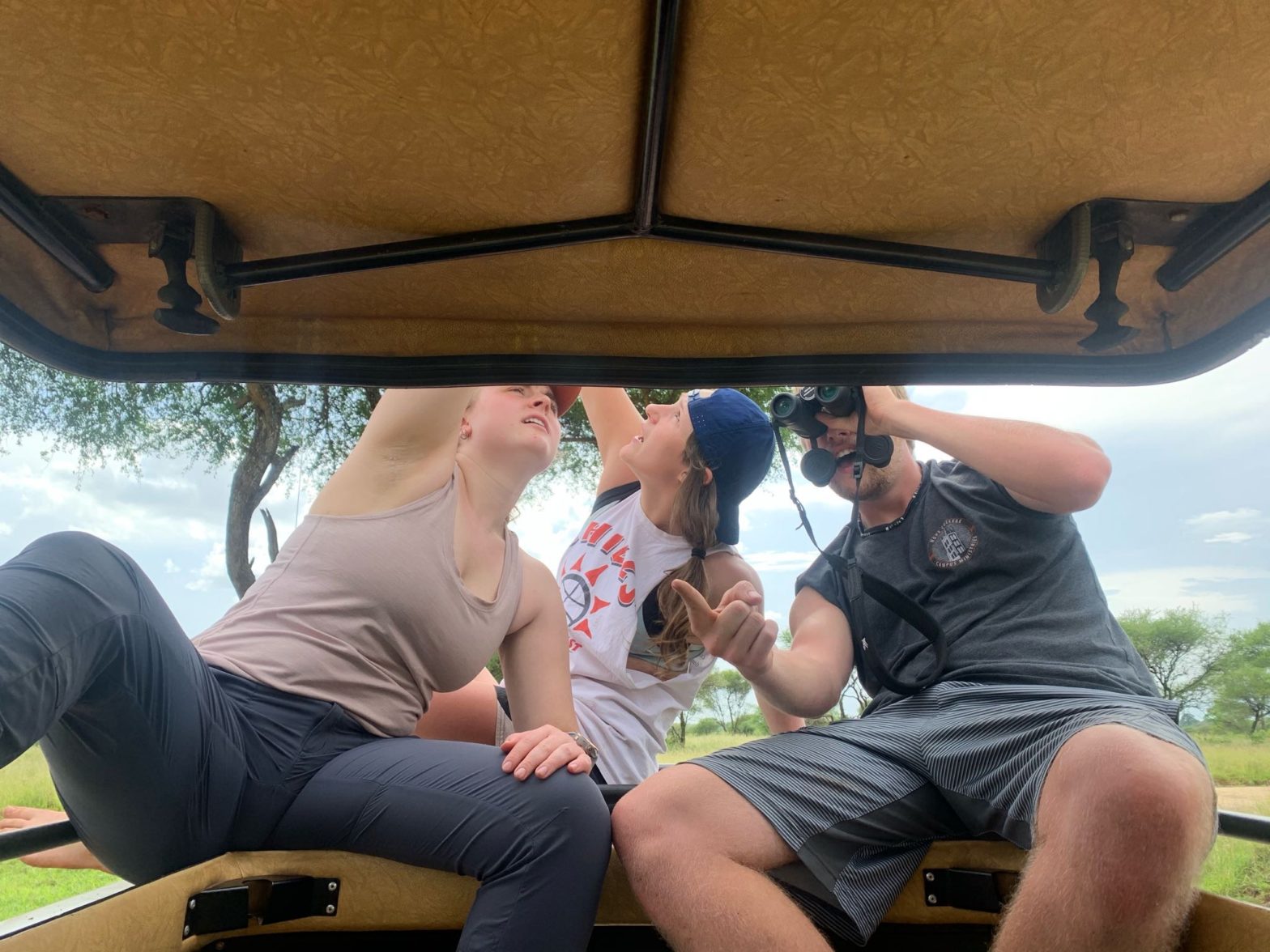
Following our stay in Mweka, we had a night of recuperation back in Arusha at Klub Afriko before heading to Randilen Wildlife Management Area (WMA). We would end up spending 3 nights there before skipping over to Tarangire National Park for two days, and one more night. During this five day period, nature was our classroom. We would wake up around 7 A.M. every morning, and catch an early breakfast before the morning ride. This entailed piling into the two land rovers we had at our campsite and setting out into the reserve to see what we could find. The morning rides were usually reserved for data collection whether that be perpendicular line road counts (to estimate park populations of various mammals) or the installation of pitfall traps (to test species variety of ground dwelling invertebrates and reptiles).
Upon completion of our morning excursion, we would return to camp for lunch and data analysis. Normally, this would be accompanied with a lecture on ecological research methodology by one of the wildlife experts on the trip. Once all of the data analysis was completed, each of the two teams would present their findings to the entire camp for critical review. There is no better place to learn scientific research methods than on safari! But, the best part is yet to come! Once done with our presentations, we would end every day with a game drive.
Many animals, particularly the predators, become more active as the evening sets in due to the accompanying cooler temperatures. We would see everything from herds of elephants to troops of baboons, and everything in between. We even managed to see a hyena once, which is rare outside of a night safari because they hunt exclusively in the dark. This was often evidenced by our ability to hear them around the camp, all night long. We would often wake up in the morning to evidence of evening visitors around camp. The last night there, I even found fresh elephant dung not 10 yards behind my tent. Crazy to think that I had one of the big five behind my tent as I slept.





Africa has this legendary list of large mammals they call the “big five”. This list includes the elephant, the rhino, the Cape buffalo, the lion, and the leopard. As it currently stands, I have spotted just one, that being the elephant, but am confident I can cross the rest off of the list before I leave the country. Serengeti and Ngorongoro, in particular, will be my best bet and I will be there in a weeks time. Rest assured, I will post the pics as they come!
- 99584118016321,63.00415881983679 ↩


